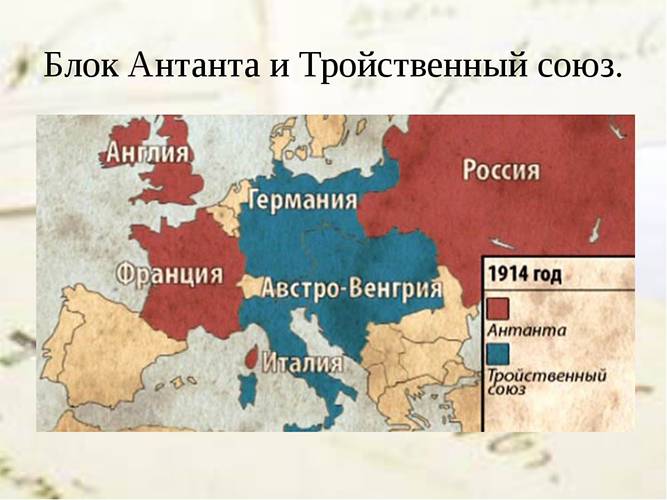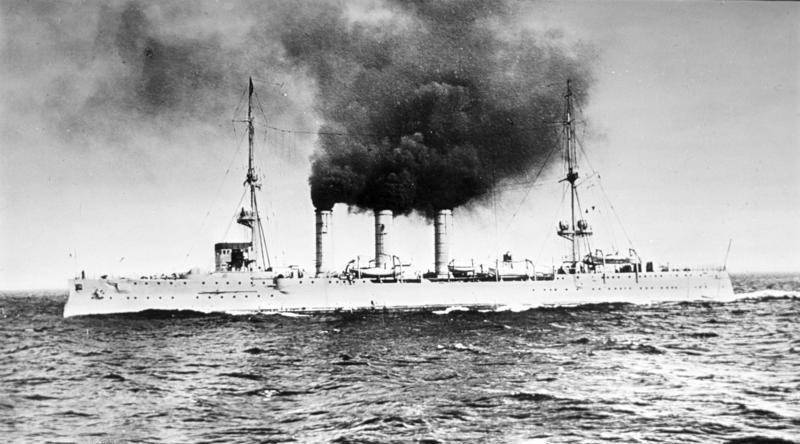British Tsushima

On July 28, 1914, La Grande guerre began, or the First World War, or the Second Patriotic War, or the German War. More precisely, for Russia it began on August 1, when Germany declared war on Russia, but not the essence, we are not interested in Europe, but quite Asia. Just like Russia, and France, and all other Powers, Germany, owning the port and naval base of Qingdao in China, kept the German East Asian squadron there. The squadron is a loud word for two armored cruisers, three light cruisers, four gunboats and other trifles of outdated types, and the 4000 soldiers of the Qingdao garrison are not the support that this squadron could rely on.
As a result, the squadron of Maximilian von Spee left, leaving in the base completely ancient junk like the Austrian cruiser Kaiserin Elizabeth. And she left without a clear plan, not to count as such a breakthrough into Germany besieged from the sea across two oceans with accompanying cruising operations? However, there was no choice - Qingdao held out against the Japanese for seven days and surrendered due to the exhaustion of ammunition, and Spee had no other German or friendly ports. There were islands in the Pacific Ocean, but these are not bases, not ports, and in general - solid "not".

In the process, the commander of the cruiser "Emden" persuaded Spee to separate his ship for cruising operations in the Indian Ocean and notably "had fun" there. Among the victims were Russian ships - the ship Volunteer fleet "Ryazan", turned by the commander of "Emden" into an auxiliary cruiser, fortunately even reinforcements for the guns were present, and the cruiser "Pearls" in Penang, whose commander once again proved that it was not admirals who were destroying ships, but slovens with officer's epaulets. However, the way the fleets of four powers at once caught "Emden" and still caught, story the other, Spee himself moved to the Atlantic, to the shores of Chile, which was considered friendly to the German Empire. Why was the city of Papeete in Tahiti bombarded on the way, God knows, without coal from local warehouses it was possible to do without. But it was this appearance of a previously carefully hidden squadron that forced the British to send their ships to the coast of South America.
And then a story begins, somewhat similar to the history of the bad memory of the Second Pacific Squadron. Fleet - he, of course, was a Grand, but he was physically lacking in all directions. As a result, what was sent to the raid across the ocean was the Canopus EBR, built in 1899, withdrawn from the reserve and hastily manned with a crew of reservists, two armored cruisers Monmouth and Good Hope, both from the reserve and manned similarly, the light cruiser "Glasgow" of the "Bristol" class, the ship is new and with a regular crew. Christopher Cradock, an honored 52-year-old admiral with combat experience - the occupation of Cyprus in 1878 and the suppression of the boxing uprising in 1900 - was put in command of this unit.
Formally, if you count by pieces of iron, the British were much stronger. One "Canopus" is four 305-mm guns, 12 152-mm guns, 152 mm Krupp armor in the form of a belt and 18 full-speed knots. "Good Hope" is two 234-mm guns, 16 152-mm guns, 51-152 mm Krupp belt armor and 23 full-speed knots. "Monmouth" - 14 152-mm guns, 51-102 mm belts and 23 full-speed knots. All this was opposed by "Scharnhorst" and "Gneisnau" - twin brothers of the gloomy Teutonic genius, carrying for two 16 guns of 210 mm caliber and 12 - 150 mm, with a speed of 23 knots and a belt of 150 mm. Even without the battleship, formally, the British are stronger. 2 234 mm and 30 152 mm versus 28 guns from the Germans, the armor is comparable, the speed is also.
It's time to accuse Cradock of stupidity, indecision, tyranny, lack of a battle plan and inept maneuvering, but ... First, the Canopus did not have time, because the paper speed and the real speed turned out to be, as it were, slightly different ... Secondly, the regular crews of the Germans, undergoing constant training and shooting, turned out to be an order of magnitude better in the accuracy of fire, and in speed, and in the correctness of the execution of orders, and in general - simply better, from the last stoker to the Spee himself, who had served for a long time these ships and with these people. The technical condition is also - a ship from a reserve and an operating ship are different ships.
As a result, we have two squadrons - one has just been withdrawn from the reserve, manned with crews from a pine forest and has no combat experience. The second is a personnel one and has already managed to shoot, at least along the coast. And two admirals - one led the welded crews of his people, who were also trained by him, the second - a team of spare on ships that they themselves had not mastered. Further developments have two methods of study. It can be analyzed that there on November 1, 1914, Coronel had in detail, who maneuvered how, fired, what orders he gave, and the like. You can build a hundred versions according to maneuvering schemes, or you can study shells and gun ballistics. But there is a simpler way - to admit that the German regular artillerymen with well-aimed fire disorganized the British fire, turning it into firing somewhere in the direction of the enemy from the surviving guns, and the inept work of the survivability parties did not allow timely liquidation of the damage.
As a result, the accumulation of these two factors led to what led to - both British armored cruisers were killed, no one escaped. They tried (the tradition of looking for scapegoats is strong not only in Russia) to turn Cradock into an extreme for everything. More precisely, for two ships, 1654 British sailors, and this despite the fact that the Germans lost 2 people wounded and received a total of seven hits. But strictly speaking - Cradock was ordered to kill himself against the wall, in the sense of intercepting the enemy, he did it. He could not drag the Canopus with him, at its speed it was unrealistic to catch up with anyone, and in battle, a speed of 12 knots and lack of training of the crew would have led to an increase in the number of victims. Sir Christopher politely hinted to the leadership that his forces were incapable of fighting, in response they also politely hinted at Sir Christopher's cowardice, and he went. For me, there is such a complete analogy with Zinovy - to seize the sea so to seize the sea, he went. The whole difference - the British could send the latest ships to the Focklands, and the British Tsushima ended with the German Tsushima, and we had no one to send.
And so - the British implemented the only reasonable plan - to damage the raiders and cover the export of saltpeter from Chile, disrupting the cruising operations of the Germans in this way. Unlucky, fresh weather and undeveloped materiel did not allow this. In theory, you could get lucky - a couple of serious hits and Spee's internment was guaranteed. Ten years earlier, it could have been lucky for us too - knock out, apart from Asama, Mikasa and Fuji, for which there were prerequisites, the Balts would have come to Vladivostok with part of their forces, and the peace treaty would have become more interesting for Russia. And so it happened that it happened, both with them, and with us. And it could not be otherwise, if only because how far in the capitals they often consider iron, and not the real picture, and the admirals on the bridges in those days still understood the word honor correctly, and acted according to this honor, not being able to refuse the authorities with his bad innuendo, and giving retired interviews about dumb bosses years later.
In this context, Sir Christopher Cradock is a man of duty, and his squadron is an example of the British spirit and the principle "I die, but I do not give up." By the way, like in our squadron, the British had Glasgow and the auxiliary cruiser Otranto left, abandoning their comrades from the armored cruisers in a lofty manner, and rescuing their ships in a normal way. Unlike Enquist, no one condemned them. Why give the enemy extra victories. A little later, at the Focklands, when the British would finish off Spee, German light cruisers would rush to break through. Why lose everything in a lost battle.
Information